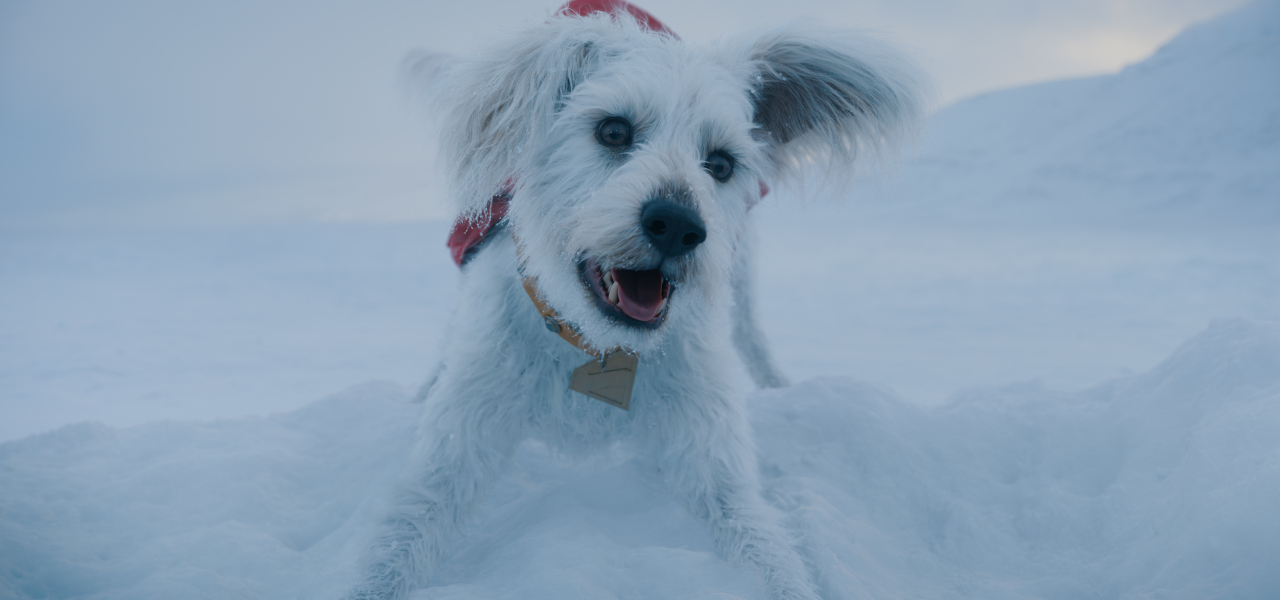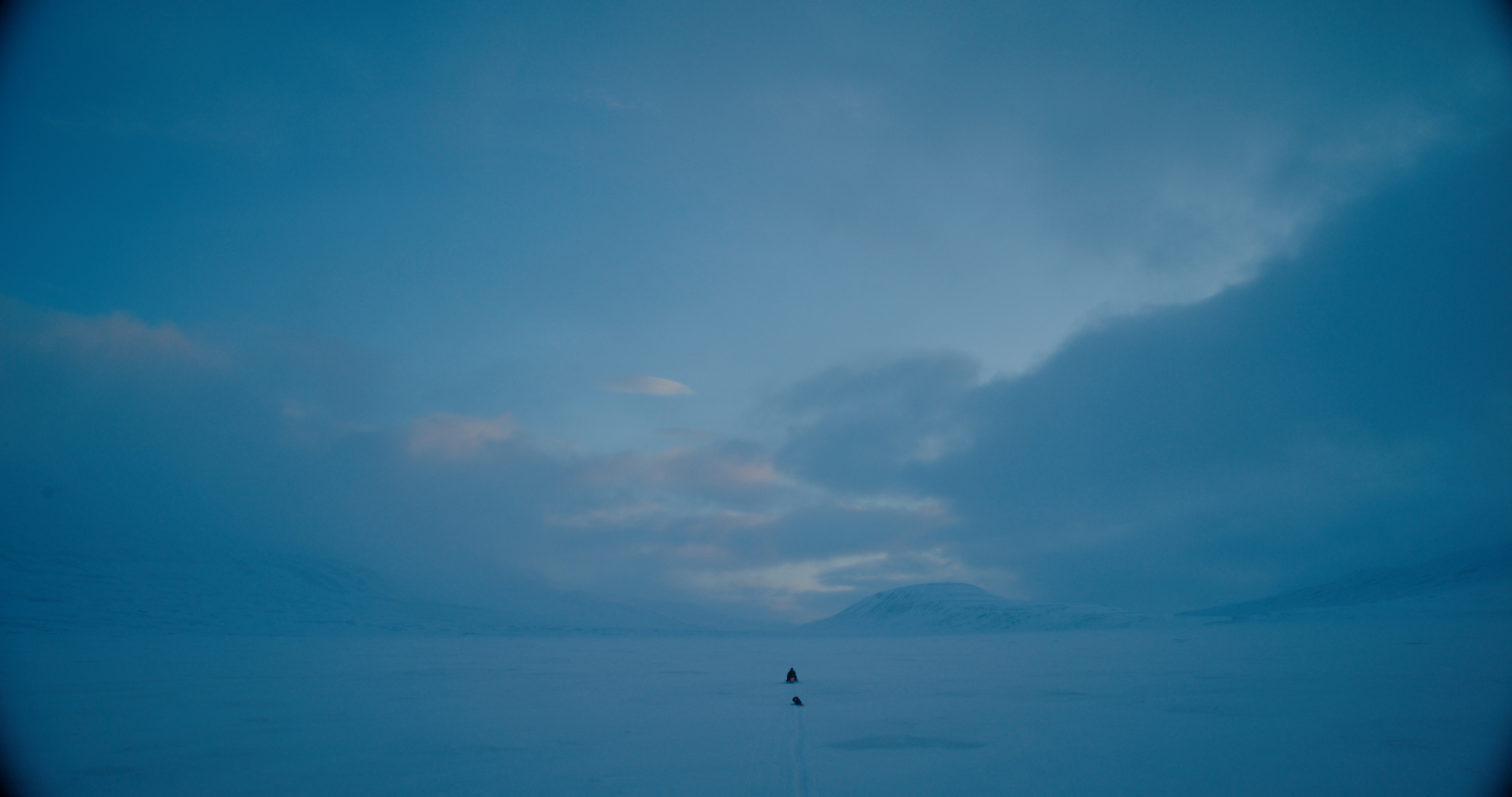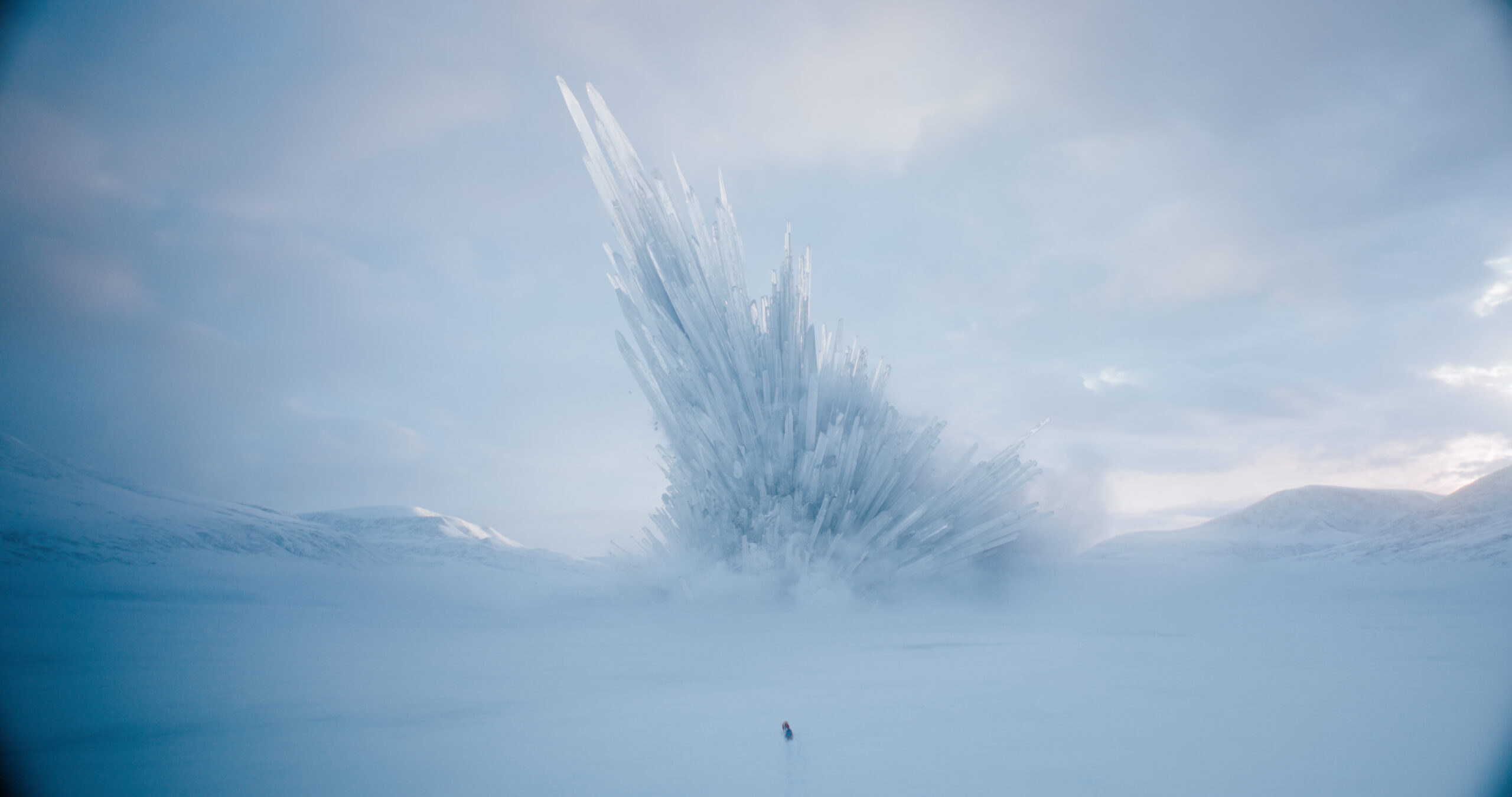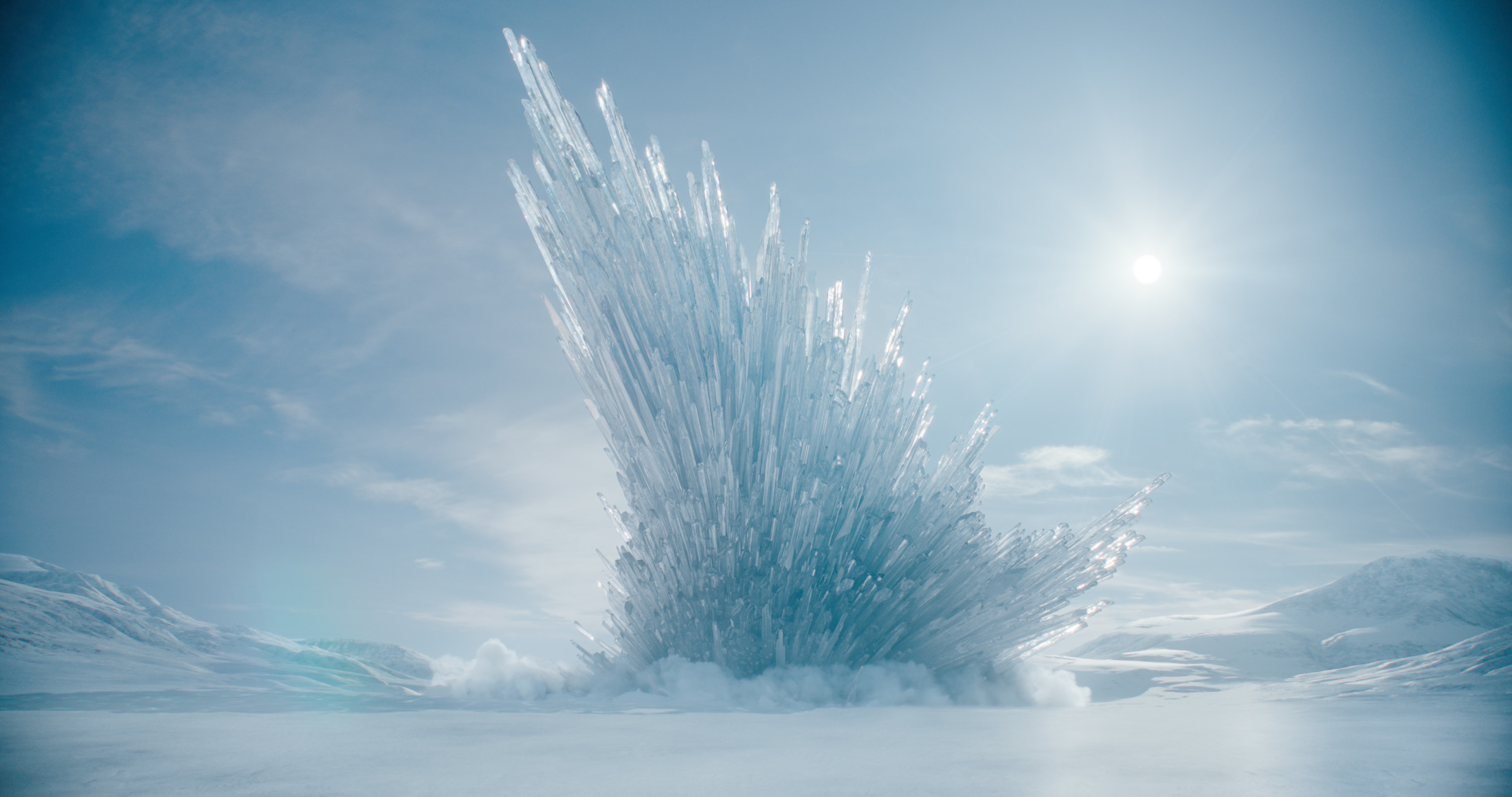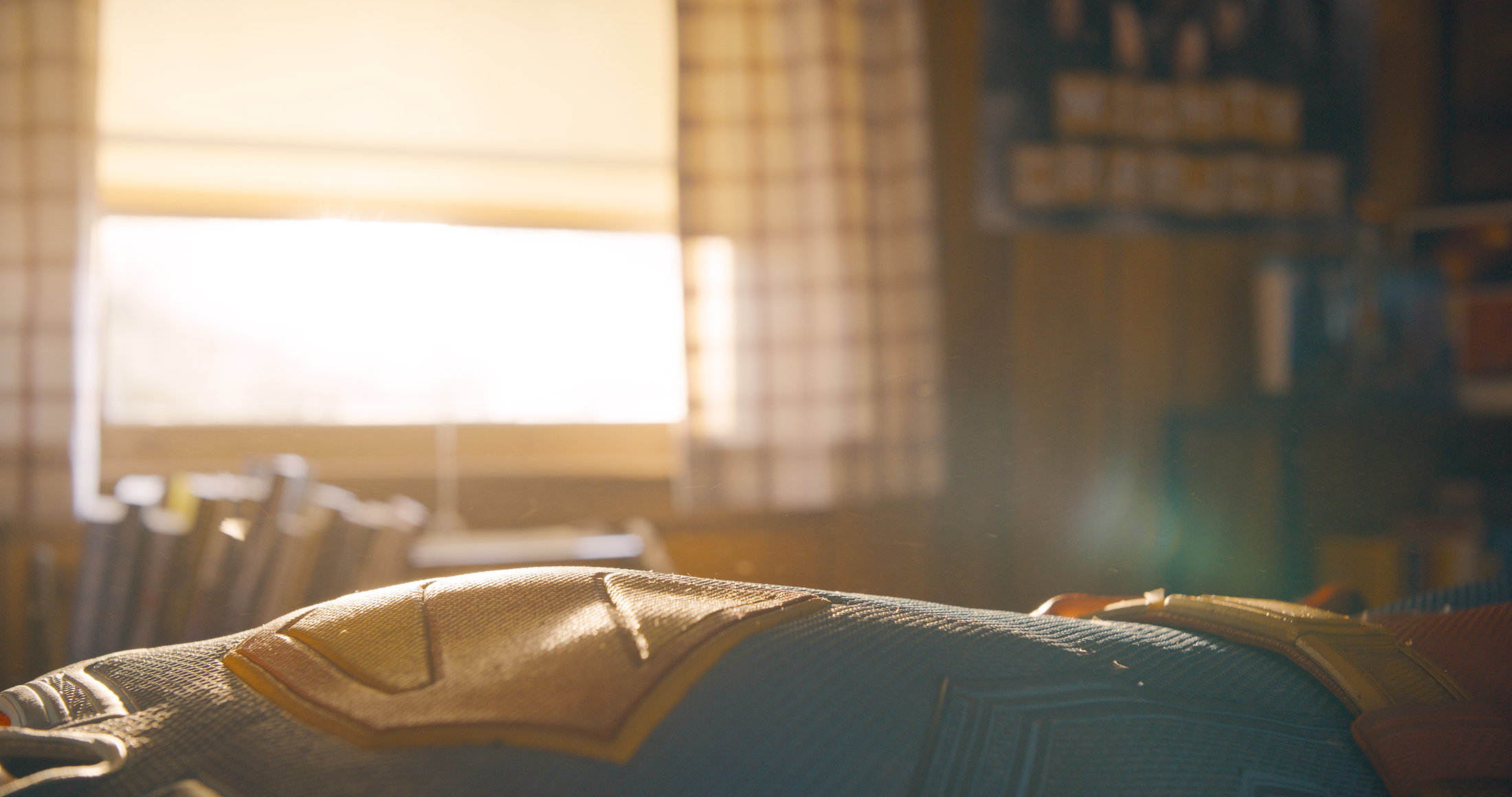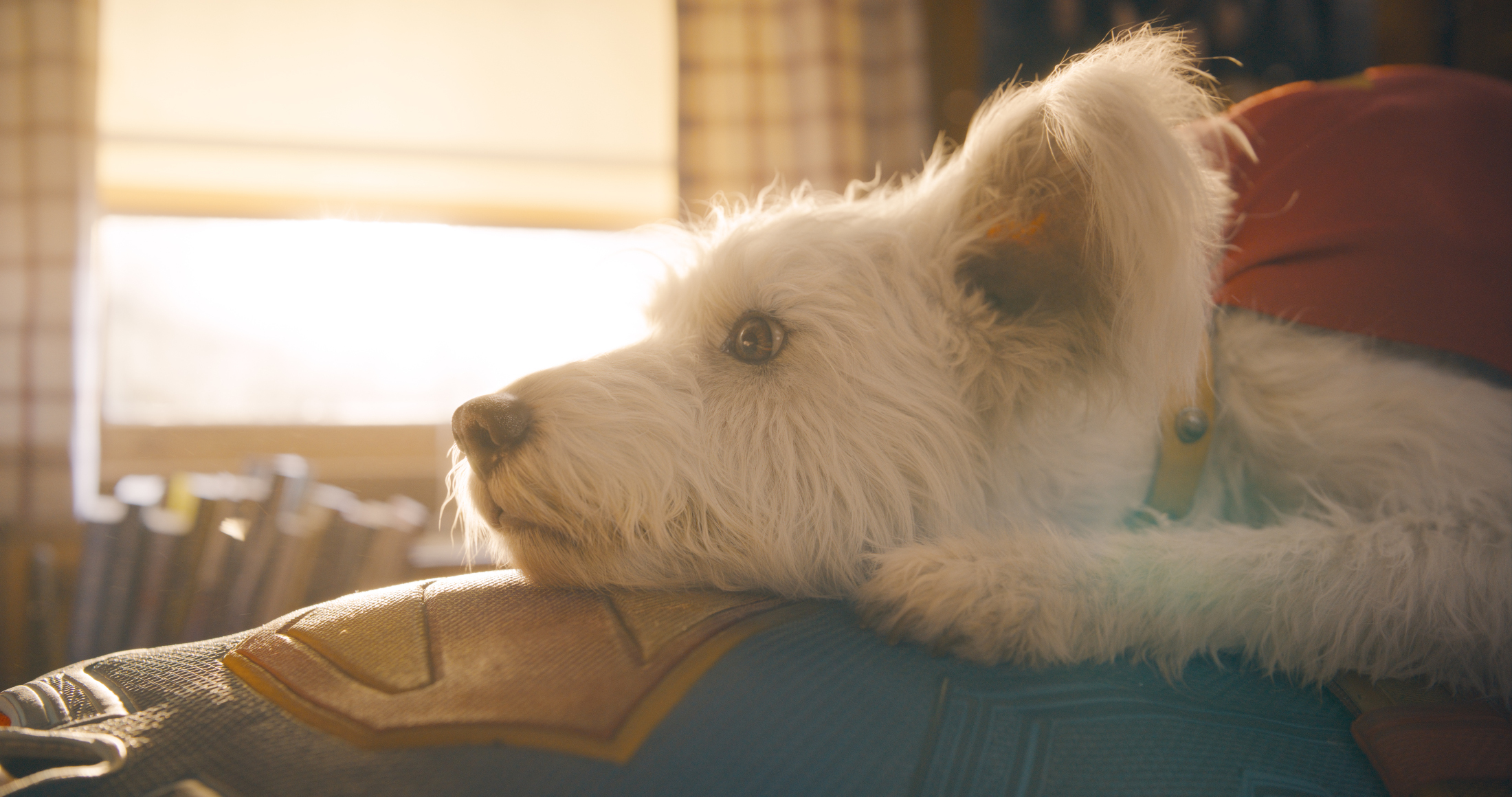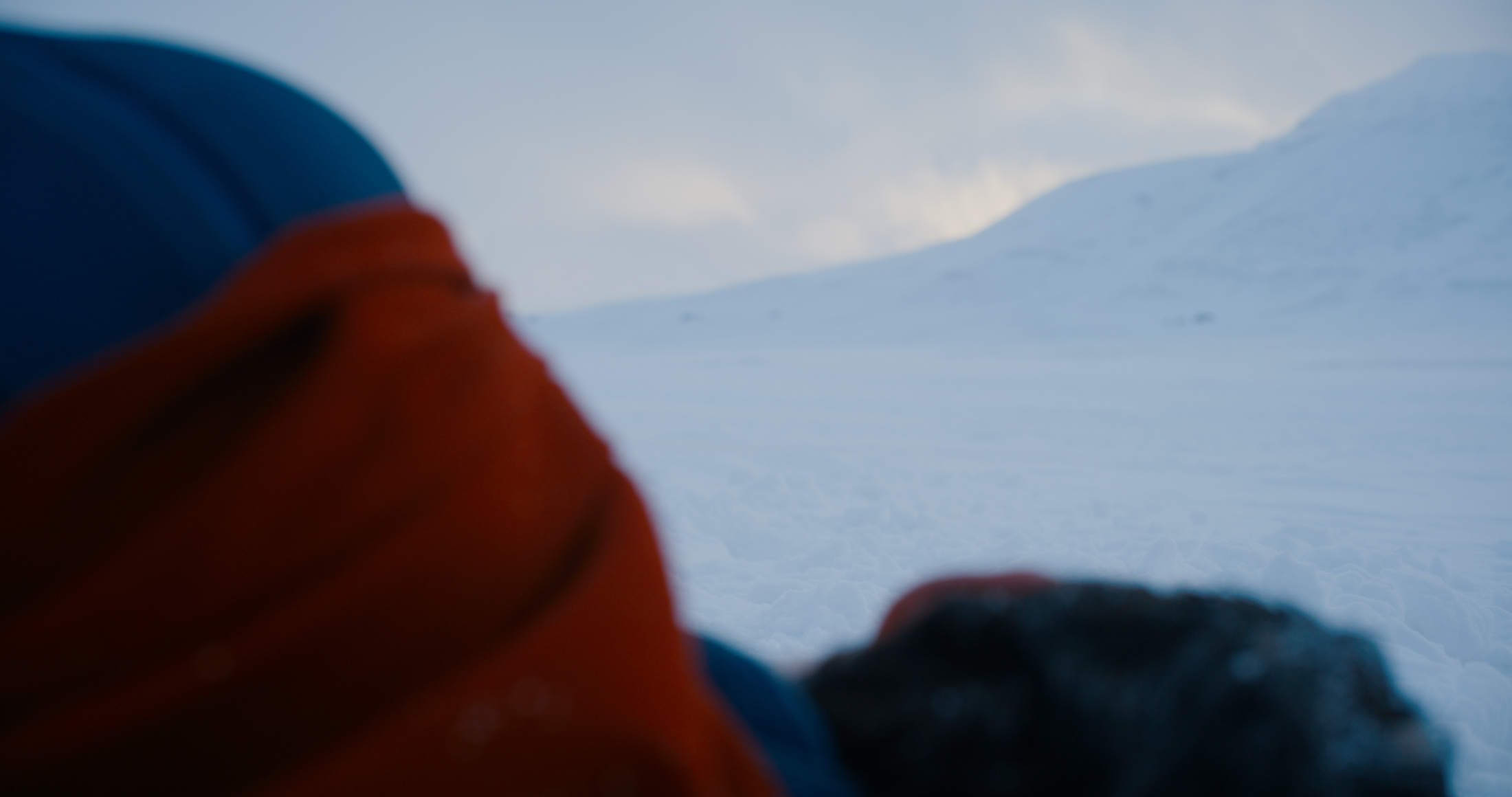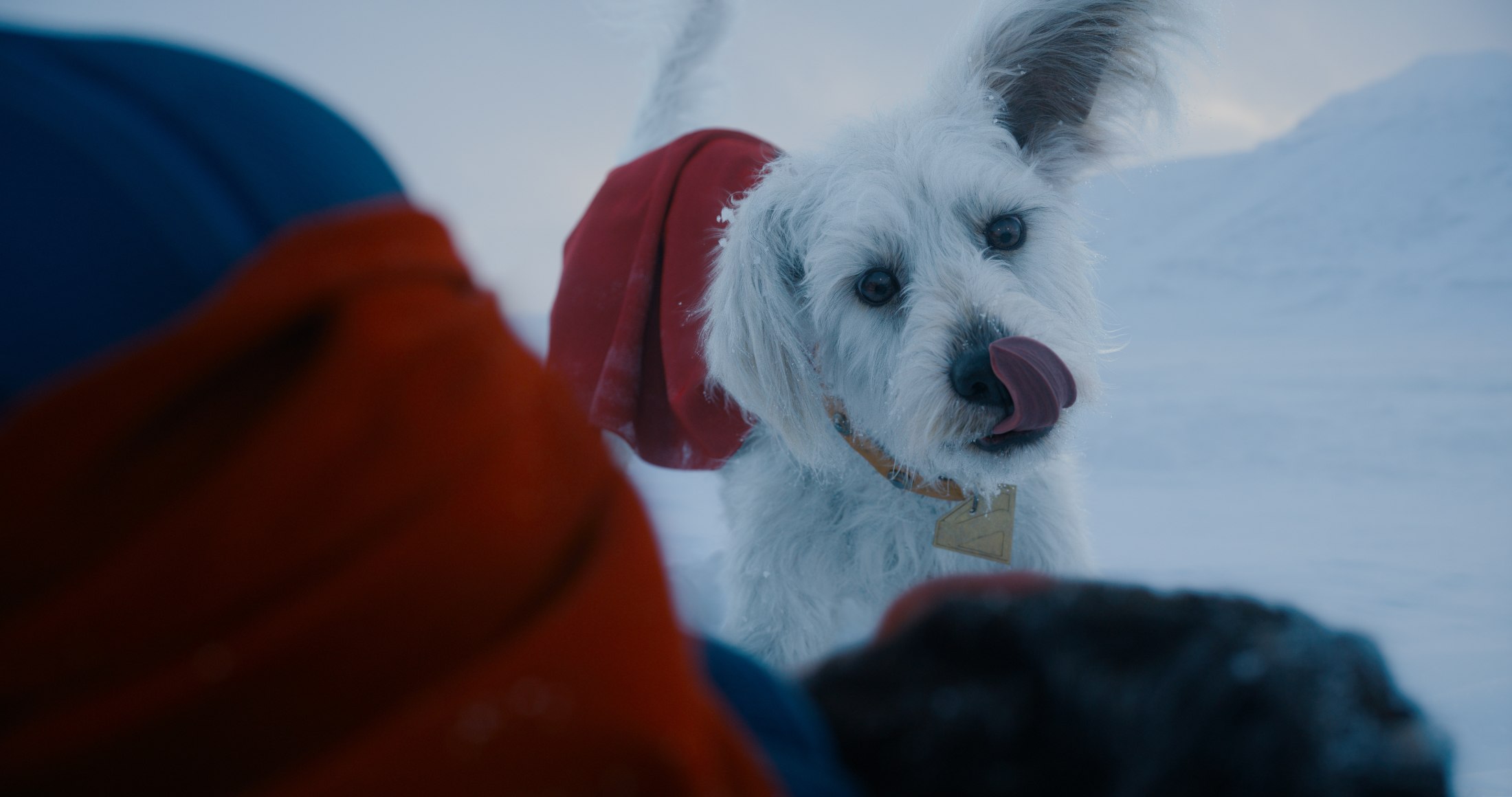When James Gunn set out to relaunch the DC Universe with Superman, he turned to longtime collaborators at Framestore – alongside ILM, Weta FX, and Rodeo FX – to help shape some of the film’s most ambitious and emotionally resonant visuals.
Led by VFX supervisor Stéphane Nazé and animation supervisor Loïc Mireault, the studio delivered over 590 shots, tackling everything from the crystalline Fortress of Solitude to Superman’s loyal companion and the film’s breakout star, Krypto the Superdog.
Krypto the Superdog: James Gunn’s Ozu Takes Flight
From the moment the first trailer dropped, Krypto became a fan favorite. Inspired by Gunn’s own dog, Ozu, Framestore set out to create the first truly photoreal version of Superman’s canine companion.
“When James wrote the script, from the beginning, Krypto was in the movie,” recalls Nazé, adding that there was never any question what the canine would look like. “He said, ‘Oh my god! My dog could be a superhero. My dog has to be Krypto.’”
The team began with photogrammetry of Ozu, while also referencing another larger dog for scale and fur qualities. “The goal was not to create Krypto, it was to create Ozu,” says Mireault. “The feedback, from very early on, that we got [from Gunn] was very positive.”
Mireault emphasizes that every movement was carefully keyed by hand: “It was purely keyframe animated. There was no motion capture. The goal was to find, as much as possible, references that matched.” The team scoured the internet for days and days, watching thousands of dog videos. Not bad work if you can get it.
“We never tried to think how the dog should move,” Mireault explains. “It always had to match an actual reference of a real dog.”
Getting the fur right was another major challenge. “The complexity of this asset was insane,” says Nazé. “With white, everything shifts very, very quickly. It’s hard and your eyes will tell you quickly with white fur if what you’re seeing is real or not.” Subtle details — dirt, melted snow, wet fur — were layered in, even down to Krypto’s characteristic shake sending particles of water flying.
Building the Fortress of Solitude, Crystal by Crystal
Equally important was nailing the look of the iconic Fortress of Solitude, built entirely in CG from the outside, while the inside practical sets were dolled up using digital effects.
Framestore began by testing individual shards before assembling the full environment. “We started with some quick tests with pieces of crystals to really quickly establish the level of transparency, the complexity,” explains Nazé.
Originally planned as an FX-driven build, the fortress ultimately became a feat of animation, giving a very real meaning to the oft-used cliché that a location was another character in this film.
“We ended up creating this complex rig with the ability to control individual crystals on the fortress as it moved, so the fortress coming out of the ground is purely animated,” says Mireault. “Keyframe animated end-to-end.”
That decision gave Framestore extraordinary flexibility. “We animated more than what you see in the framing,” says Nazé. “It sounds crazy, but … it was very important for us to construct the fortress from the ground to the top … because it was all reflective.”
The Engineer and the Fortress Battle
Framestore also played a central role in the Fortress battle sequence, where Superman faces Lex Luthor, a swarm of Superman robots, and the nanite-powered villain known as The Engineer.
“The reflections alone made it one of the hardest sequences,” recalls Nazé. “But we knew the Fortress was essentially a character itself, so everything had to interact with it believably.”
Mireault adds: “During the big fight sequence, the robots are interacting with the set, so the shadows, reflections, and everything need to work together to seem possible. Each robot had to cast a shadow on all the crystals, so we were never just matching one object to another, but making sure the whole thing interacted.”
A Director Who Understands VFX
Nazé and Mireault stress the value of working with a director who knows the language of VFX.
“That’s the advantage of working with someone like James Gunn … he understands visual effects more than most filmmakers,” says Nazé. “He is one of those directors you could show like two cubes and say, ‘That one is Superman, and that’s Krypto, does the speed in this scene look good to you? OK. Great. Next.’”
That clarity and trust gave the Framestore team a degree of creative freedom often uncommon on VFX-heavy Hollywood productions.
“It gave us the freedom to test and to propose things,” says Mireault. “Because if we don’t feel that we have the freedom, we just do exactly what is asked of us. But on this film, we could ask, ‘What do you think of this change?’, and sometimes the director actually liked it and would make the change.”
The clear lines of communication, they say, mean more time spent polishing and less time second-guessing direction or redoing work. “You spend more of your time pushing the quality,” Nazé explains. “Because you don’t have to try to understand what he wants. This director has a very clear idea of what he wants, but he’s good at explaining it, and he knows what is possible.”
Super Work
With Superman, Framestore helped bring both the iconic and the intimate to life. From the awe-inspiring Fortress of Solitude to Superman’s best friend Krypto bounding playfully alongside his master, the studio’s work blended technical precision with artistic nuance.
As Nazé puts it: “At the end of the day, it’s about making people believe. Whether it’s a dog flying through the snow or a crystal palace rising from the ice, if they believe it, we’ve done our job.”

